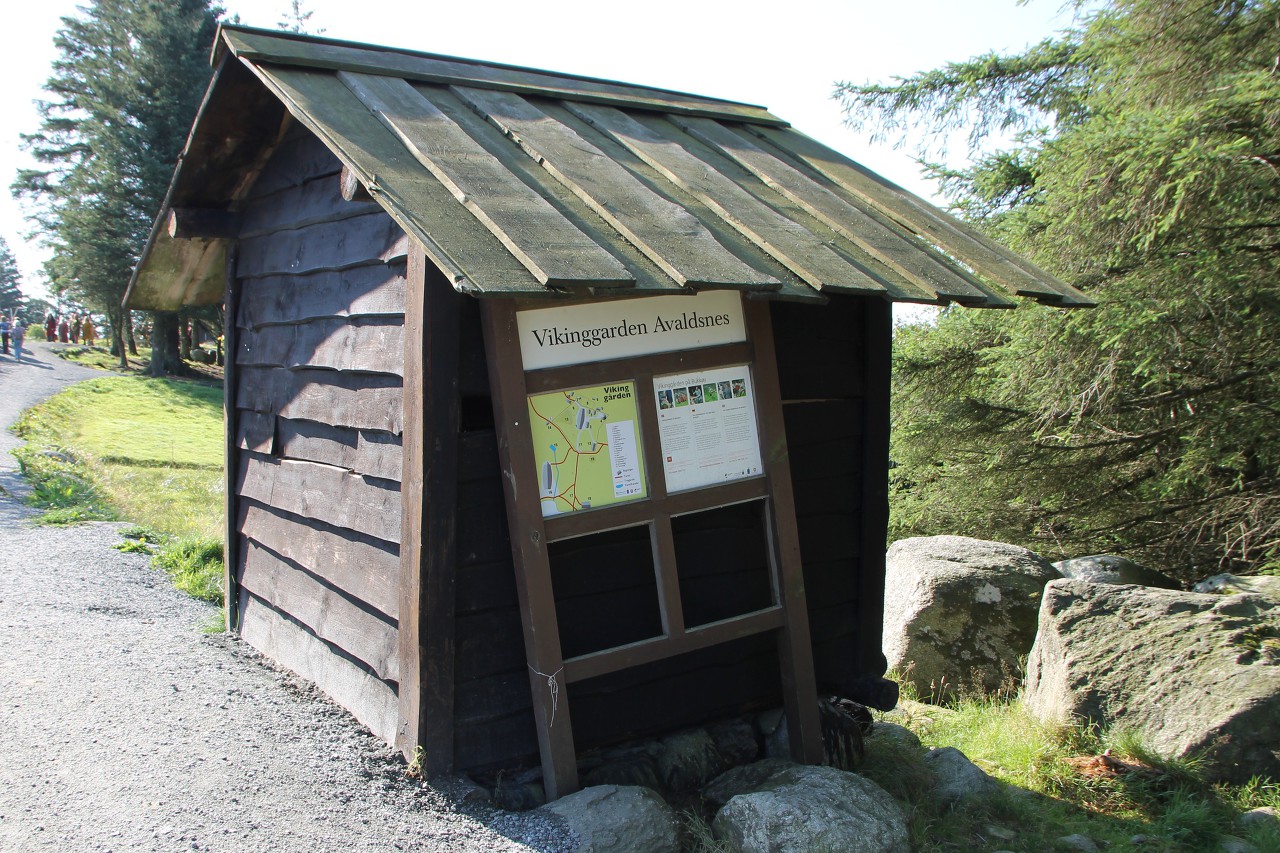Avaldsnes Viking Farm
After 10 minutes of leisurely walking through the picturesque area of Avaldnes, the road led us to a wooden bridge leading to the Bukkøy island.
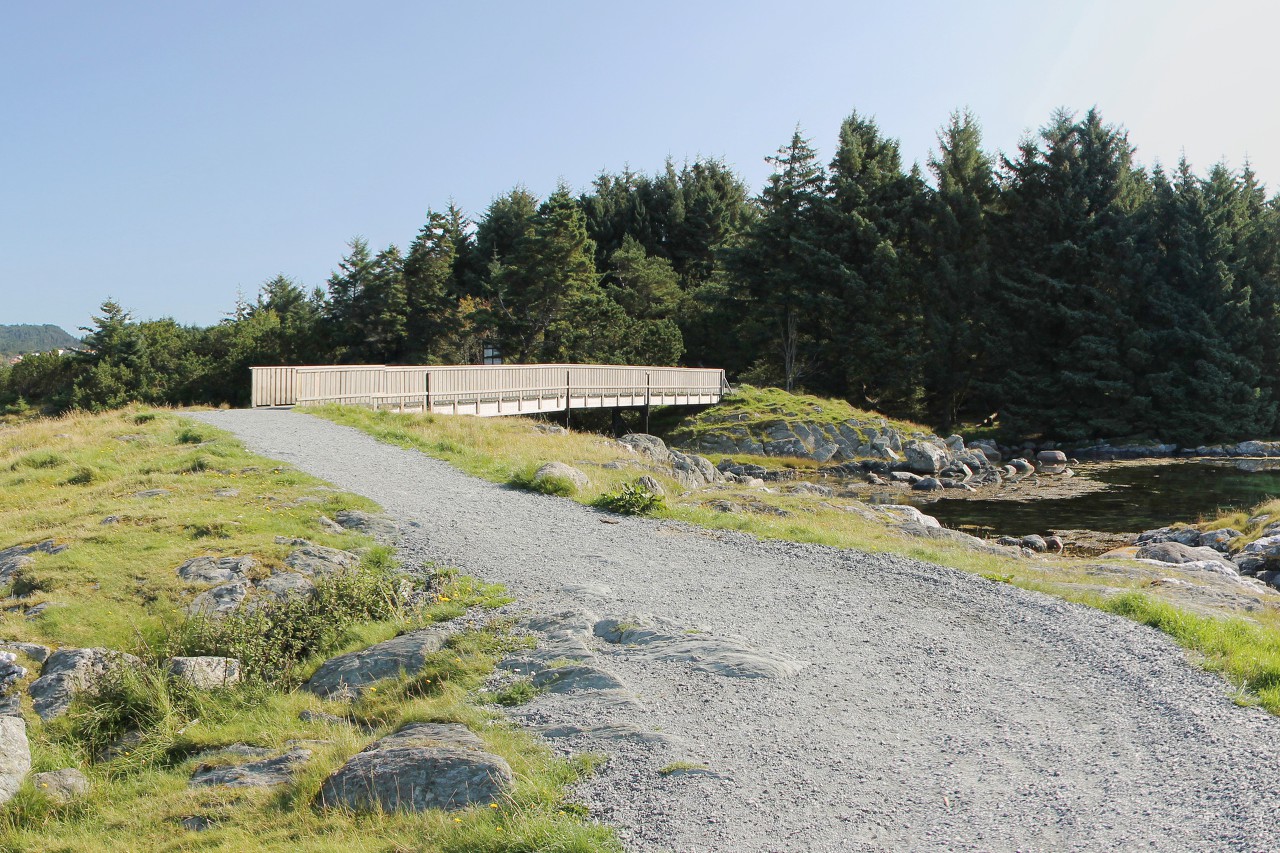
After crossing the bridge, we immediately find ourselves in a wild shady forest.
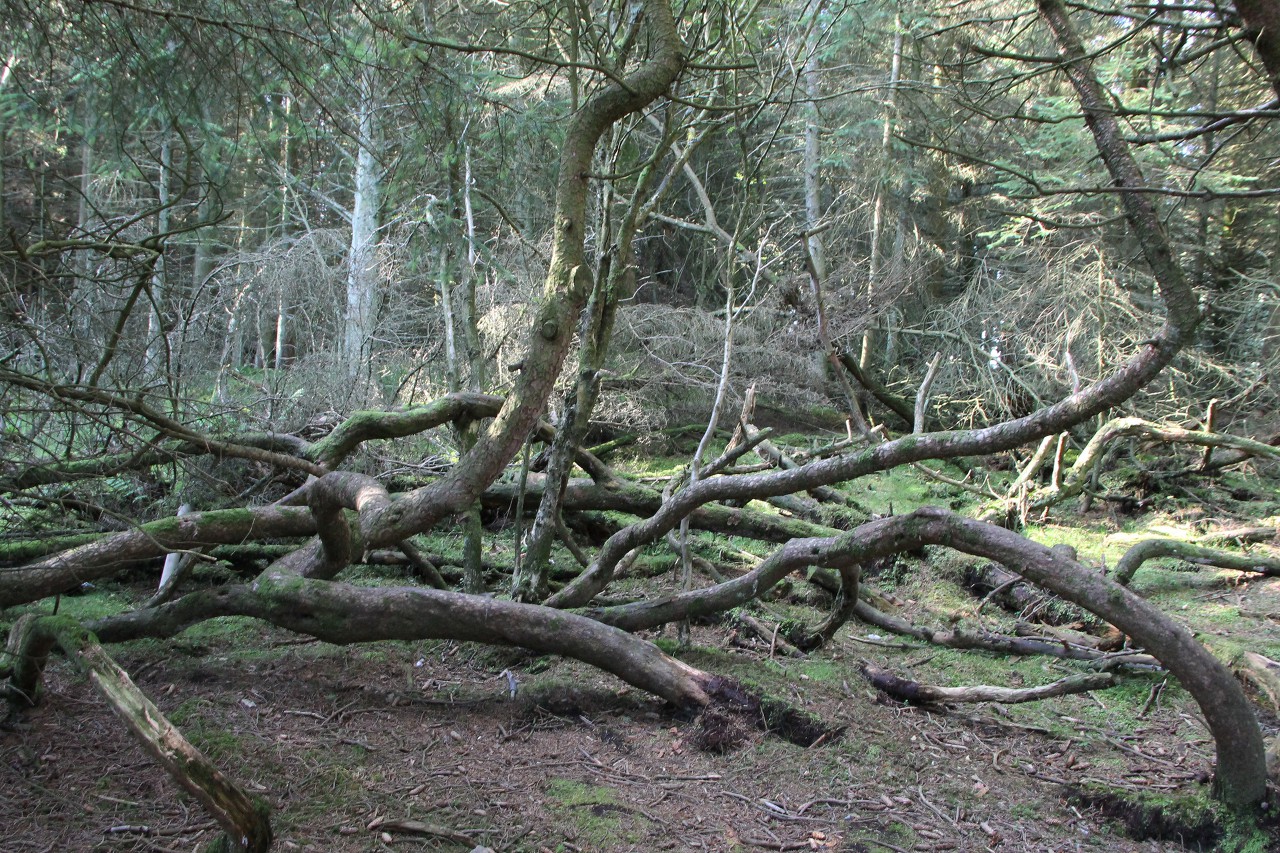
A hundred meters later, we came to a large clearing on a hill where the village of Vikings is located.
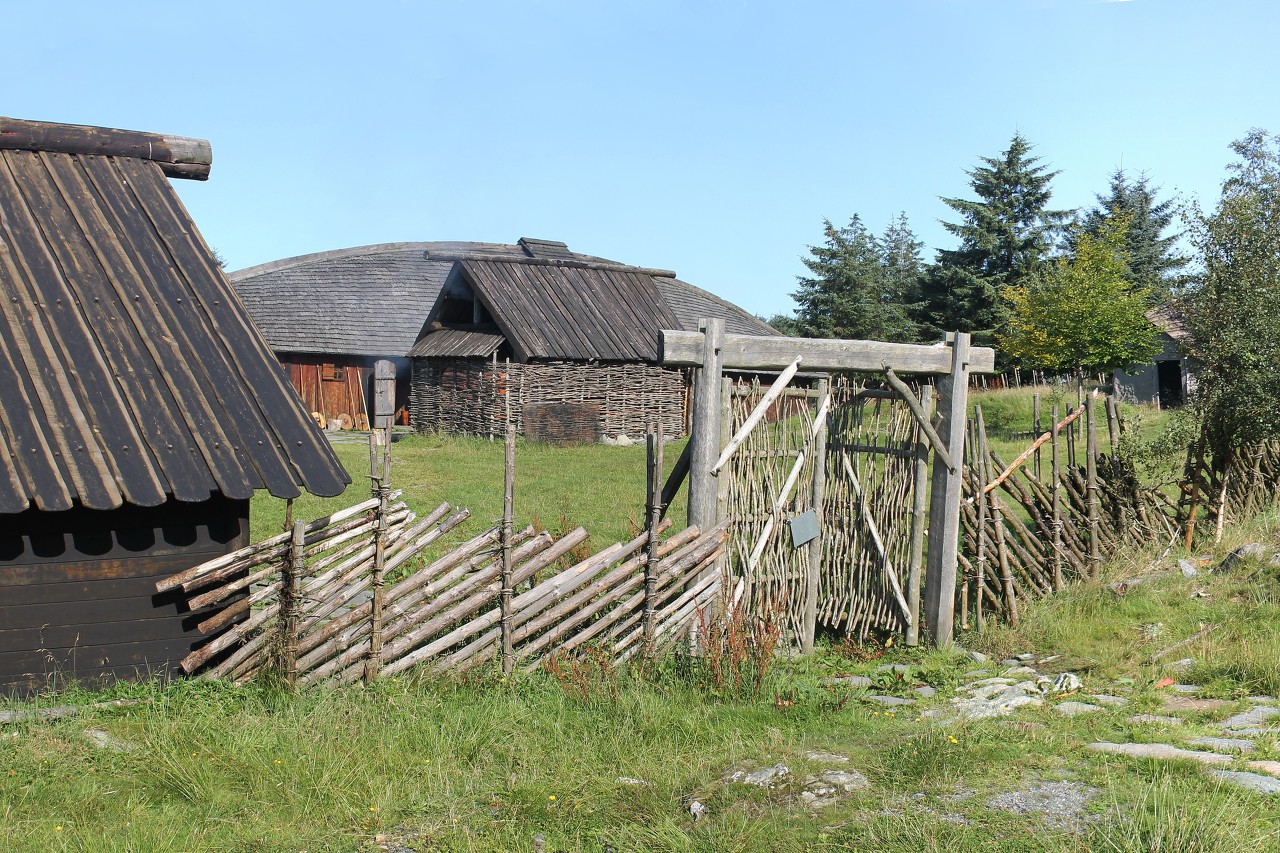
The village was built in 2005 as part of a project of the Stavanger archaeological Museum, which aims to study ancient construction technologies. All structures are reconstructions of pre-Christian buildings. Only the tools that were available in the 10th century were used during construction.
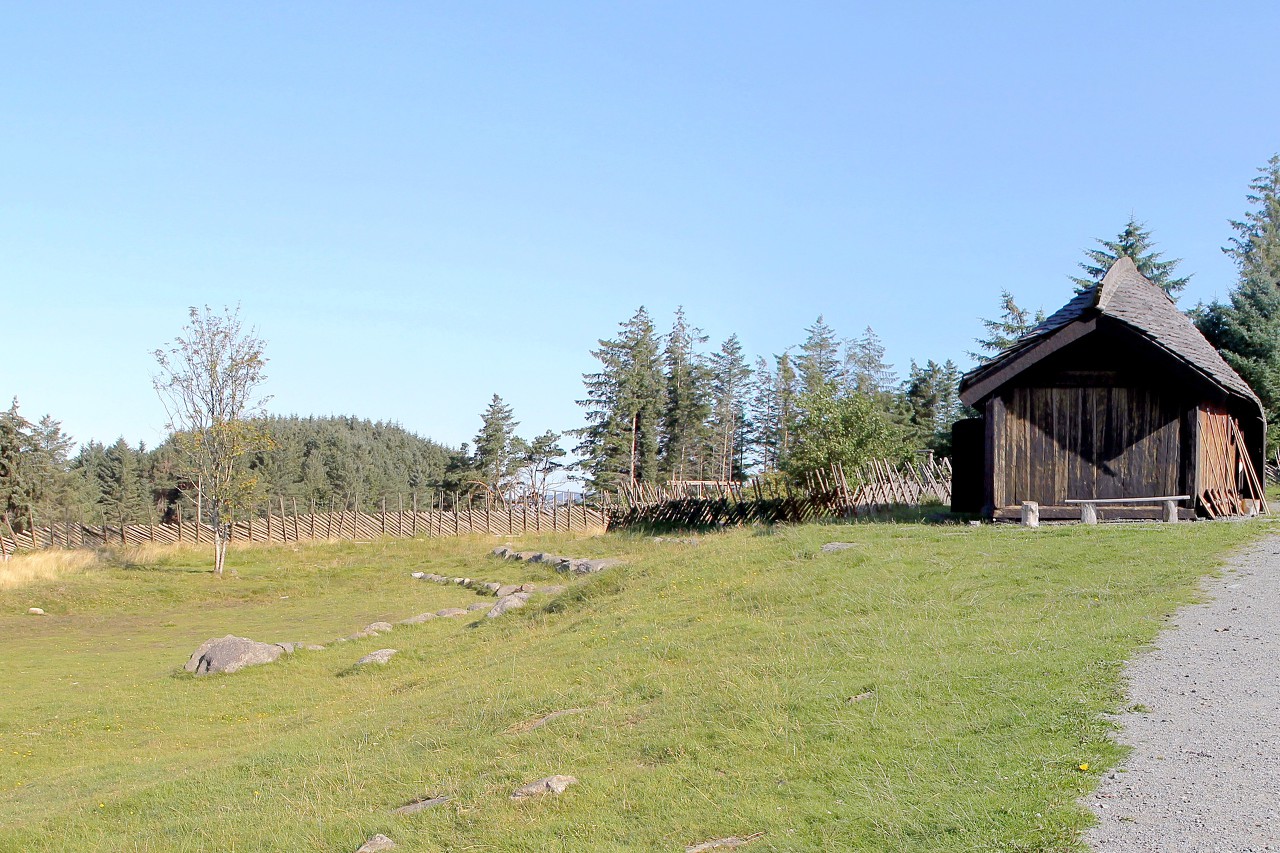
The settlements of the ancient Norse were separate family communities engaged in agriculture, so the village is often called a farm.
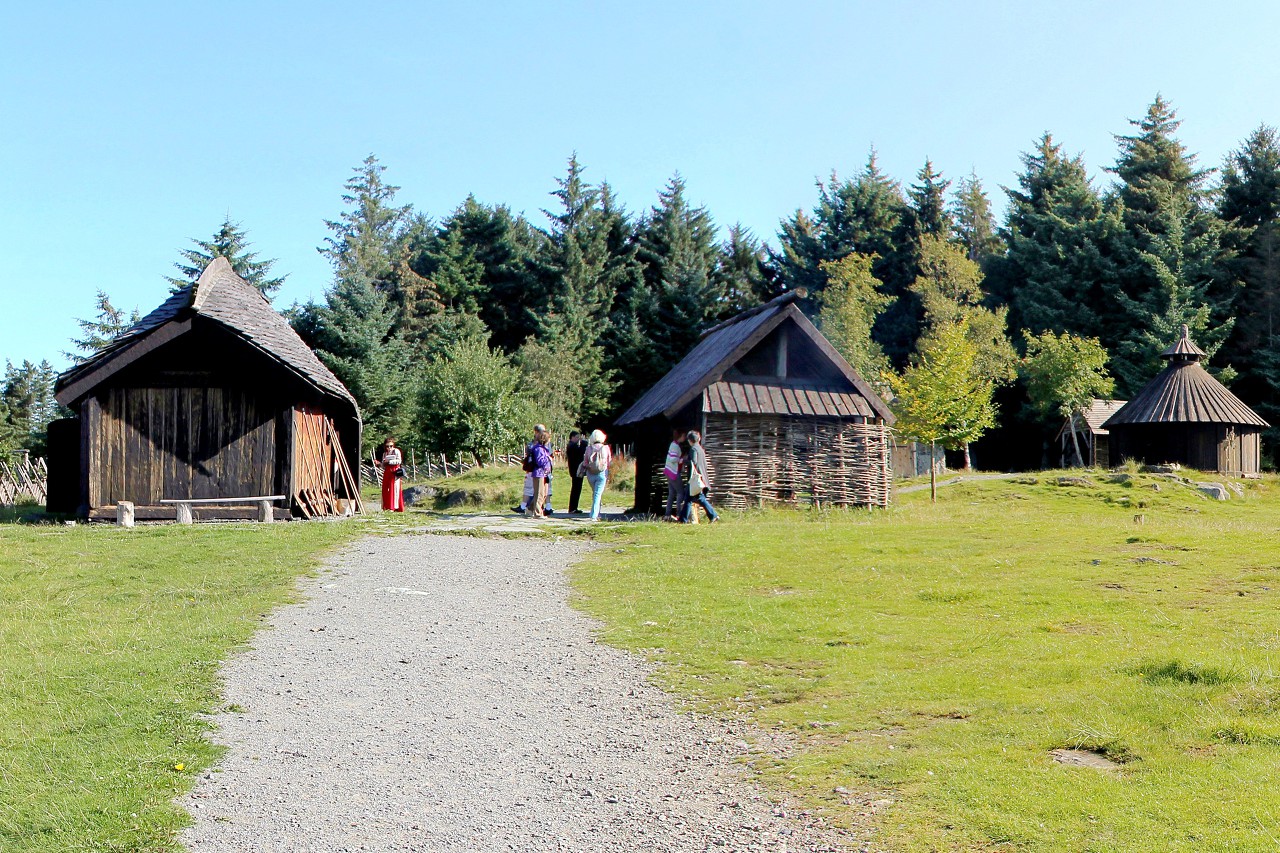
At the gate of the village is a Runestone dedicated to king Halv, a descendant of king Augvald, whose name gave the name of the area Avaldsnes. On the stone you can see the inscription in old Norse "Holmrygr raisti stain þan aft Halfr konungr" (the Island tribe Rigr put this stone in memory of king Halva). The name of the Rygr tribe was eventually transformed into the name of the Rogaland region. Halv was a descendant of king Augvald, whose name gave the area its name Avaldsnes.
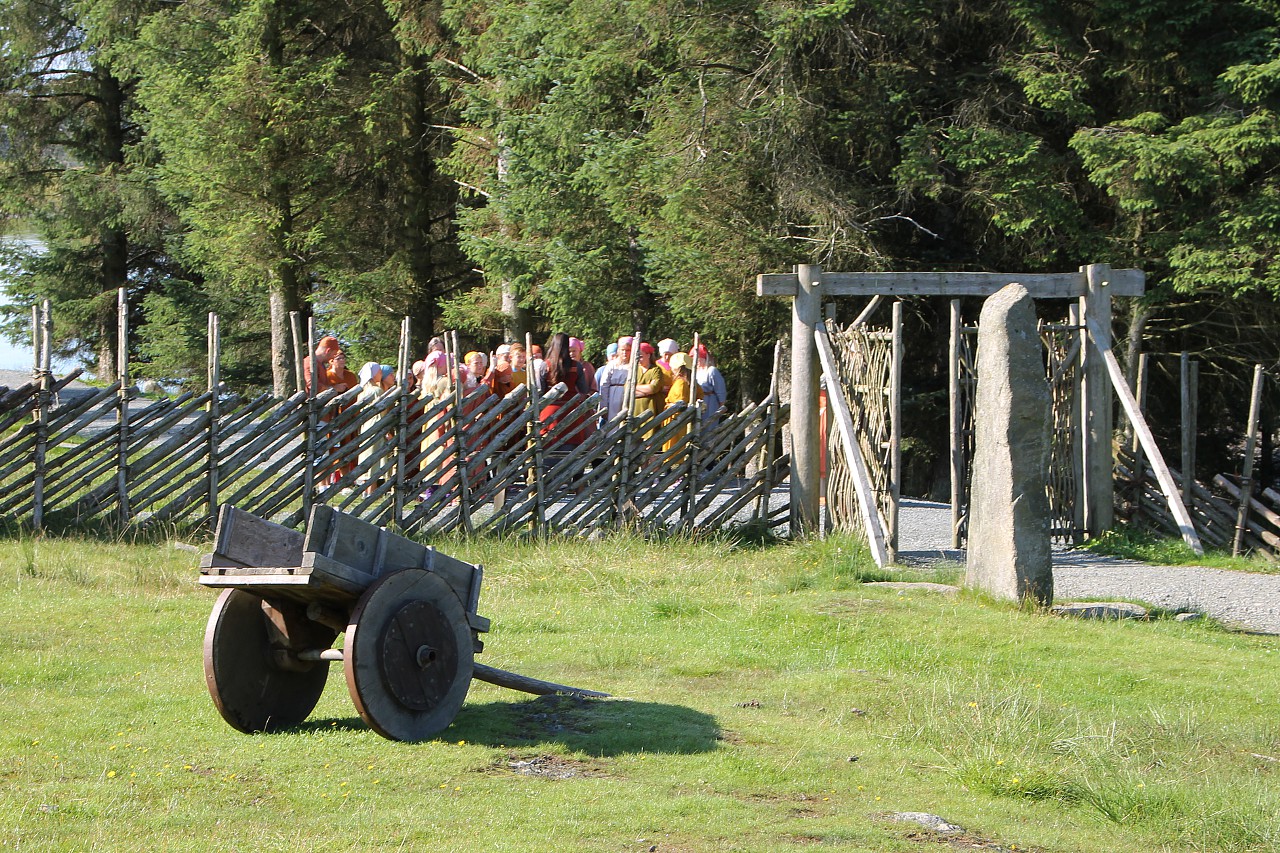
On the territory of the village about two dozen buildings for residential and agricultural purposes, they will be a separate story.
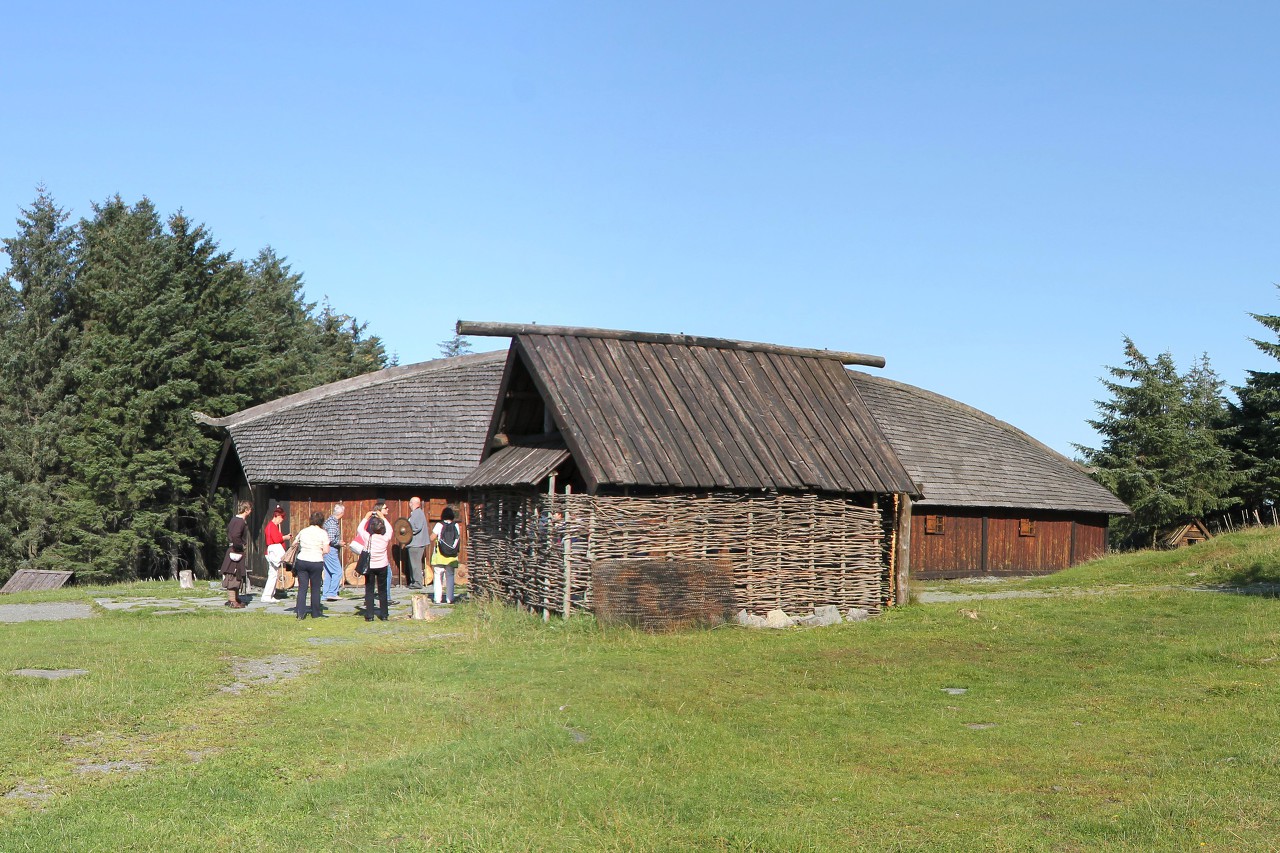
The settlement is surrounded by a fence made of sloping poles, traditional for the Scandinavian peoples.
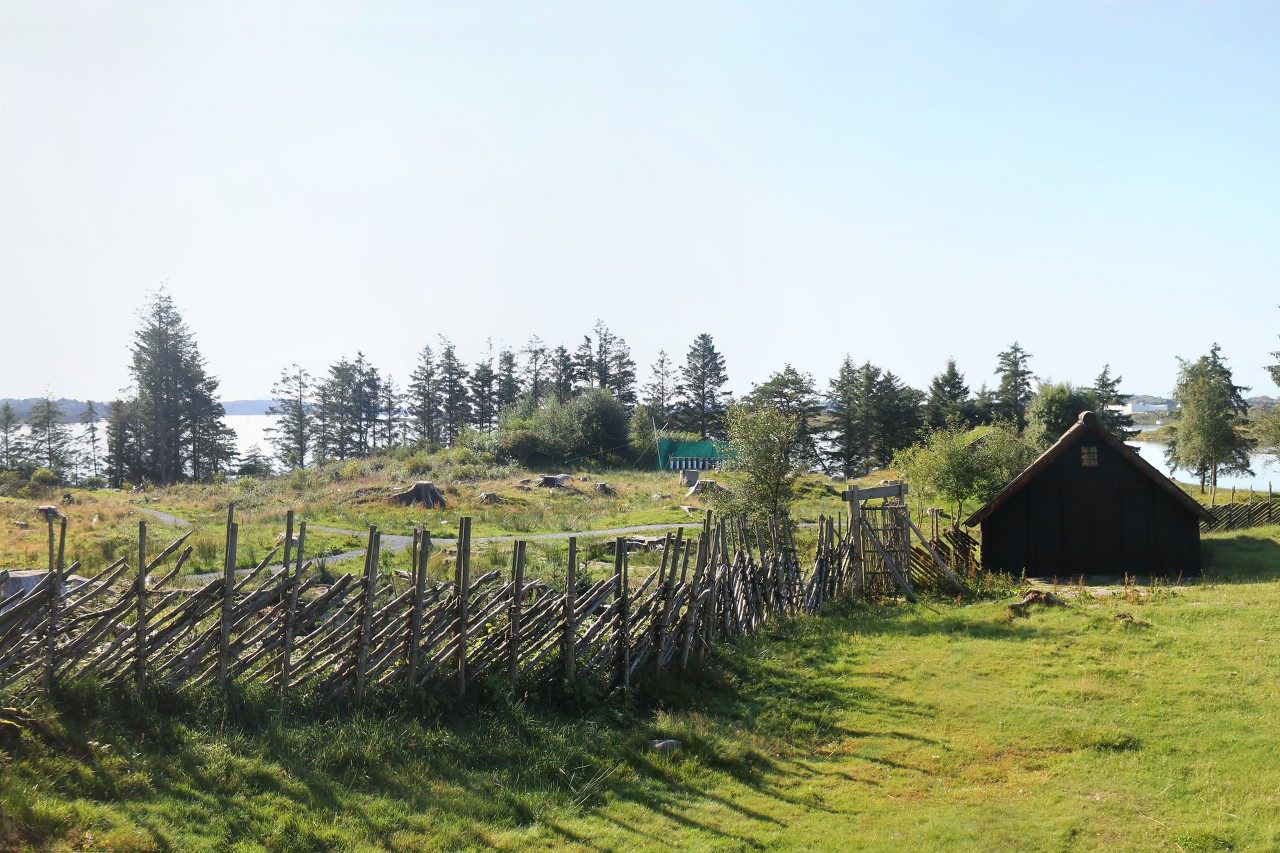
Once outside the fence, you can walk along the shore along the dense coniferous forest.
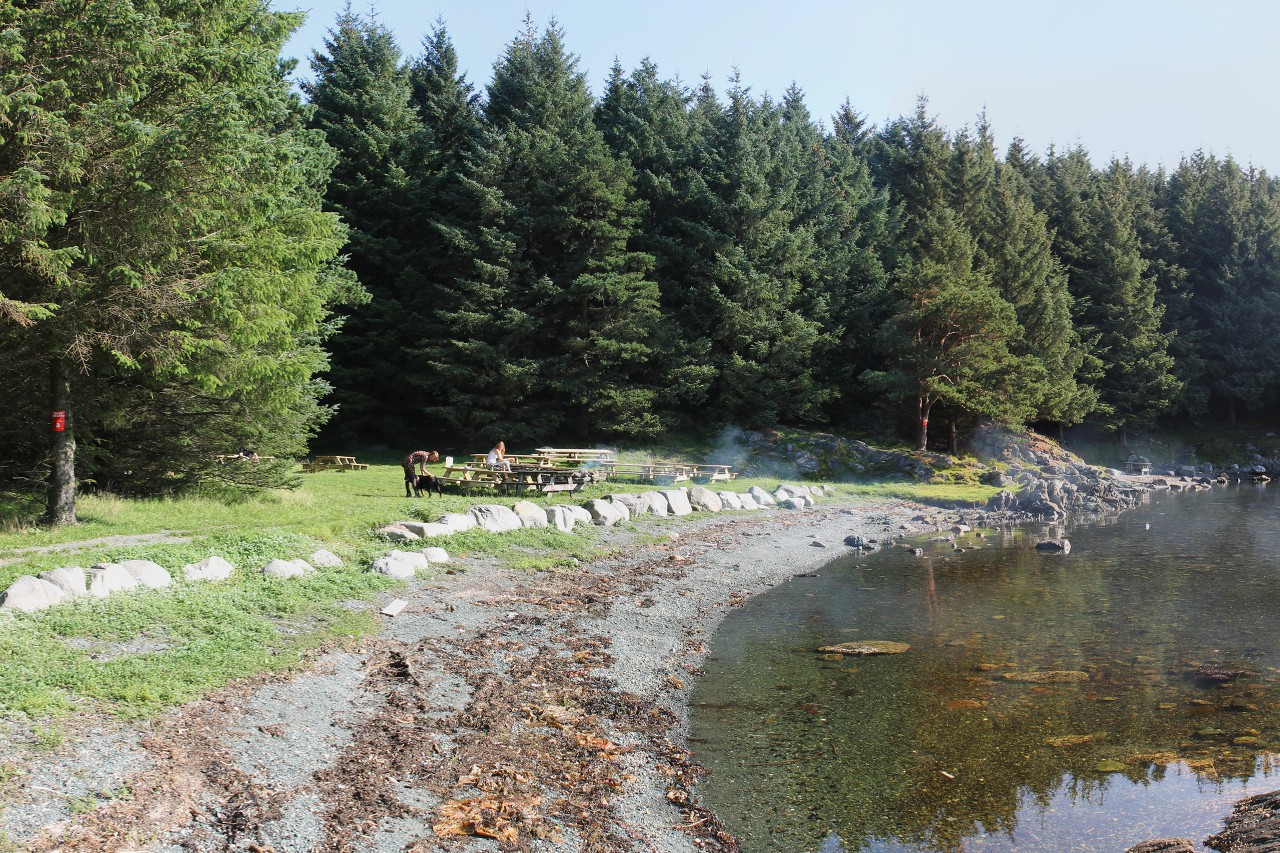
There is a picnic area on a flat glade by the water.
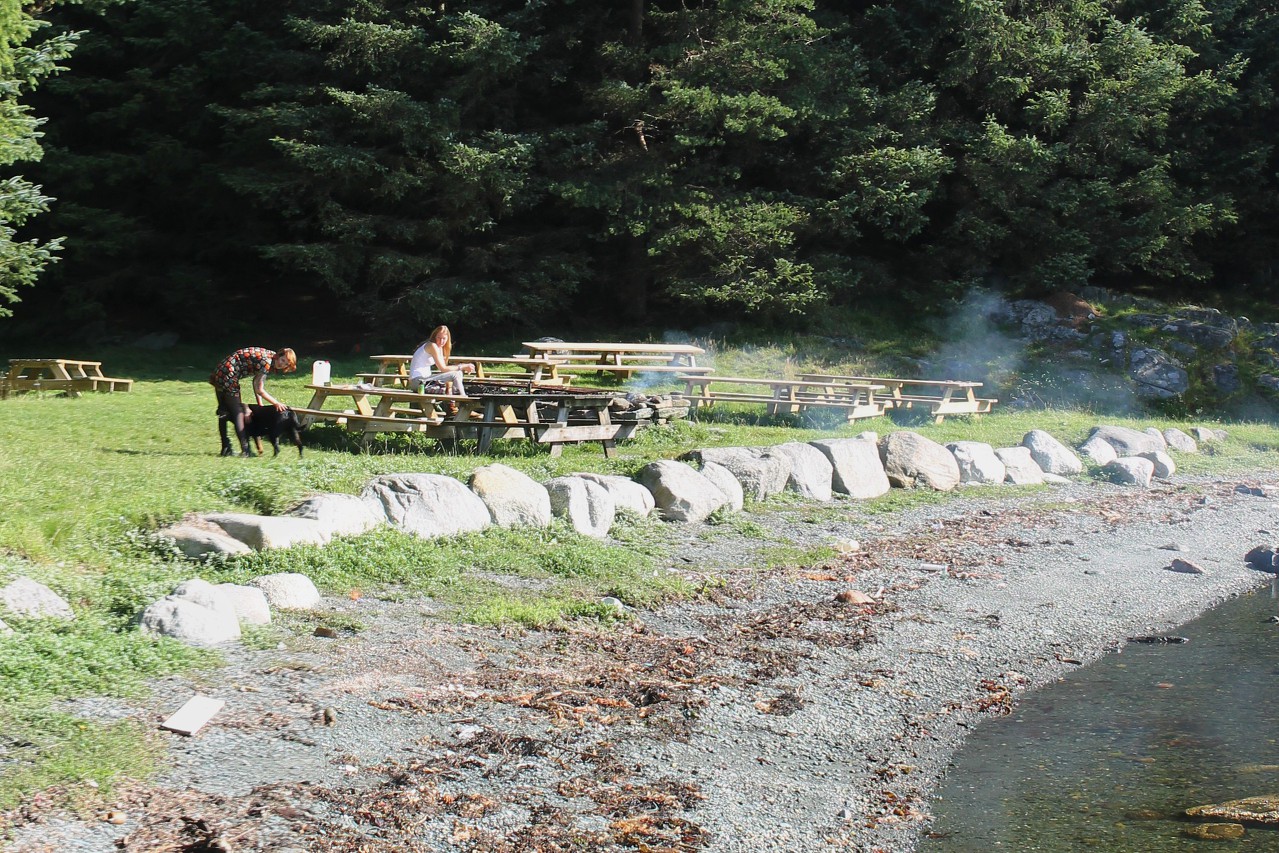
On the shore is a reconstruction of the hangar that contained the battle Drakkar. The military fleet of the Viking Kingdom was built as follows: several families had to maintain at their own expense a ship equipped with everything necessary and have a combat-ready crew of family members or mercenaries. By order of the king, the dragonboats were launched and formed into a flotilla to repel attacks or go on raids for loot. In 1991, archaeologists discovered the remains of a similar structure on The island of Rennesøy. A replica boat hangar, 32 meters long and 15 meters wide, was built in 2004. The building is an arched roof, starting from the ground on two rows of internal supports and without cross beams. The distance between the supports allows you to store a vessel up to 5 meters wide in the hangar.
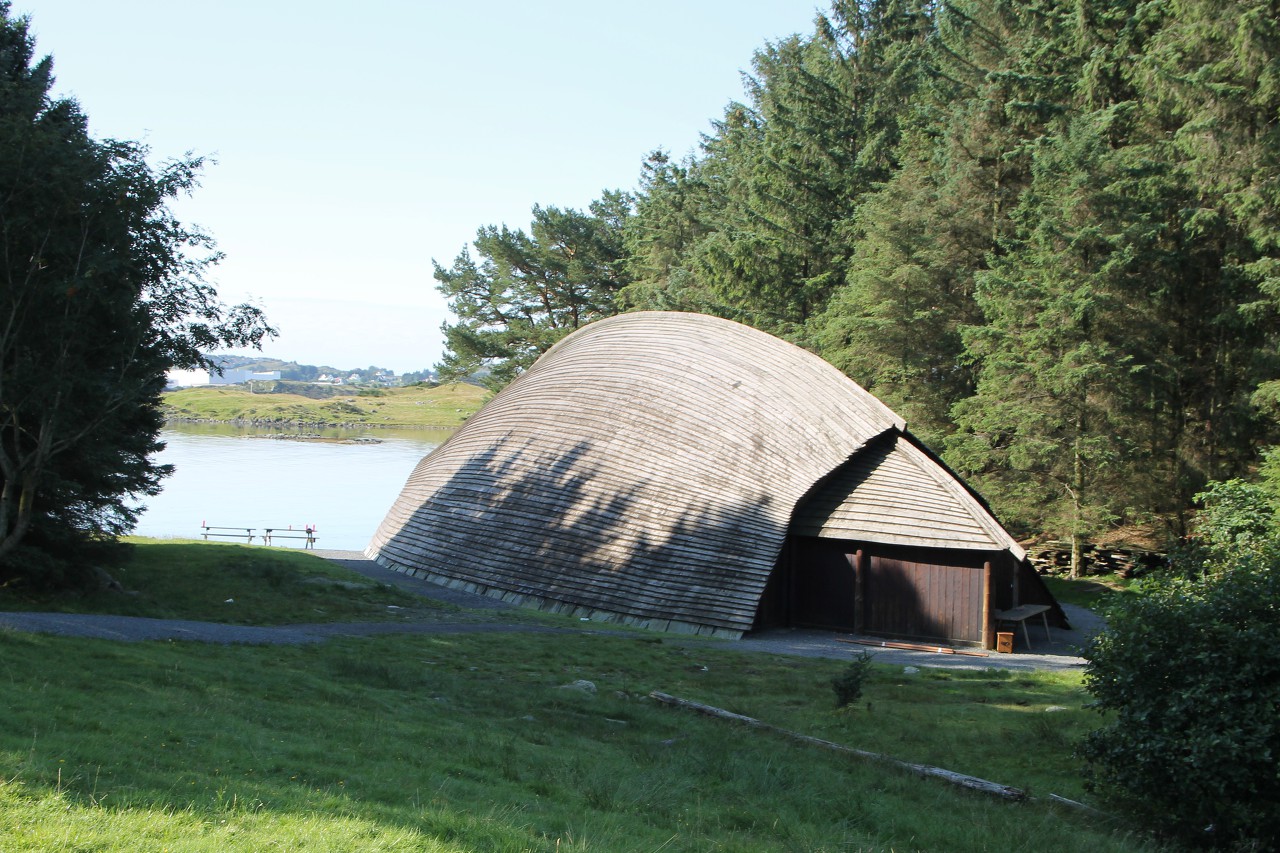
Every year, at the end of the second week of June, Viking fans from all over the world come to Bukkøy island. Here a tent city grows, historical reenactments of battles are arranged, weapons and armor of the Vikings, household items are displayed, and concerts of old Norse folklore are held.
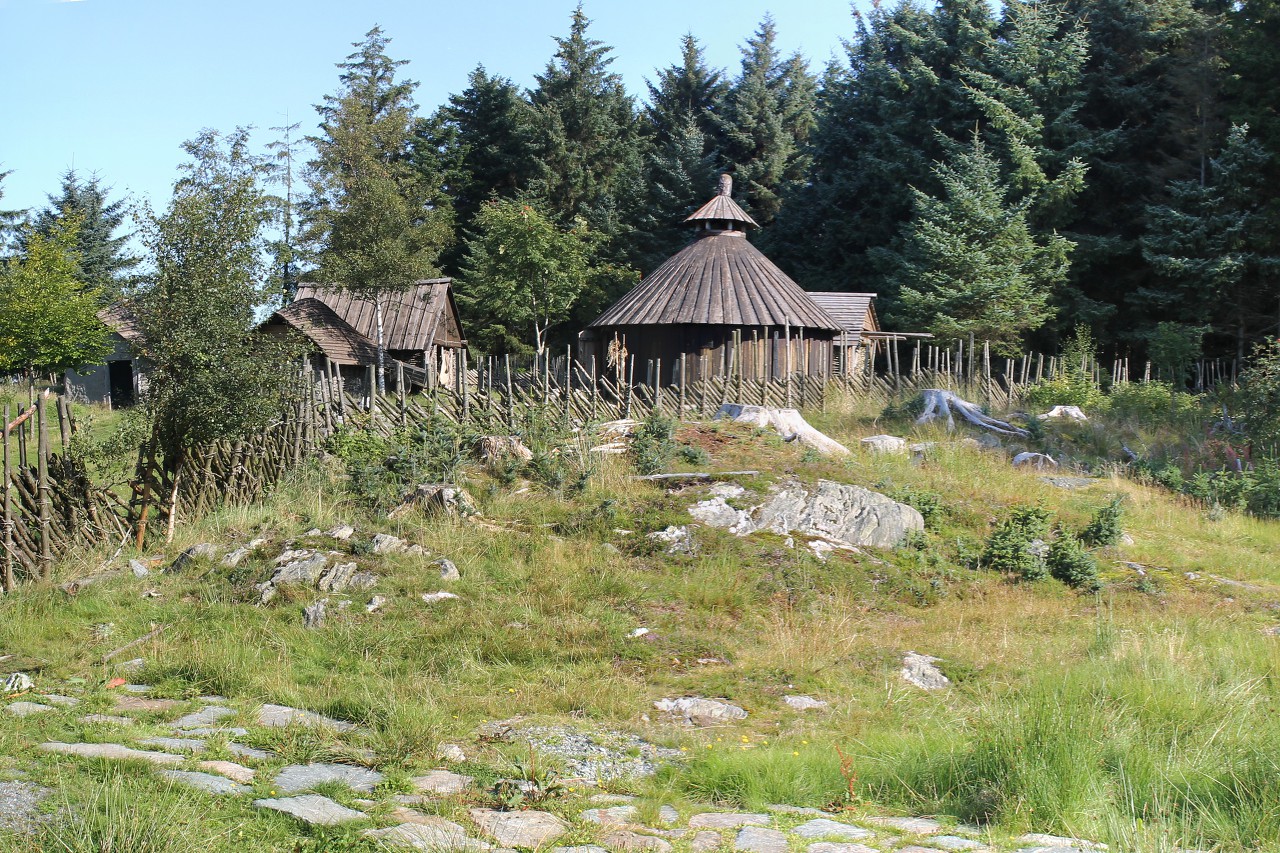
The Viking village is open to visitors from April to October daily from 10 to 16 hours.
